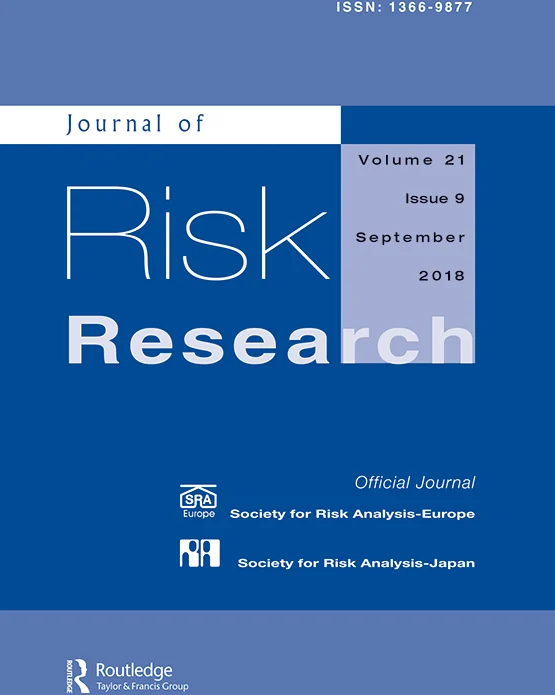理解风险话语和语言
IF 2.4
4区 管理学
Q1 SOCIAL SCIENCES, INTERDISCIPLINARY
引用次数: 4
摘要
摘要了解公共领域的风险沟通对风险研究很重要,因为风险管理不仅需要决策者和专家很好地沟通风险,还需要了解公共领域如何更广泛地讨论风险。因此,本期特刊讨论了研究文本中风险的语言表征及其随时间变化的方法。随着越来越多的数字化文本可供研究,学者们现在能够使用先进的定量内容分析、文本挖掘技术和语料库语言计算工具来分析大型文本语料库。这些进步对风险研究和社会科学研究也很有用。具体而言,由议会辩论、社交媒体或政府网站等构建的新闻媒体和其他大型文本(语料库)已成为分析风险语言和话语的宝贵资源,可用于更好地了解公共领域风险传播的动态。这些贡献通过一些案例研究(如恐怖主义、肥胖、水力压裂、气候变化、暴露前预防、移民以及议会辩论和新闻报道中风险使用的历时分析)举例说明了不同的研究策略,并讨论了应用这些研究工具的关键方面。这篇引言概述了通过话语和语言处理风险的不同方法的核心特征,然后强调了尚未解决的问题以及基于语料库的风险研究的研究和方法的前景,最后介绍了它们的贡献。本文章由计算机程序翻译,如有差异,请以英文原文为准。
Understanding discourse and language of risk
Abstract Understanding risk communication in the public sphere is important for risk studies since the management of risk not only requires decision makers and experts to communicate risk well but also to understand how risk is debated in the public sphere more broadly. This special issue therefore discusses approaches which examine the linguistic representation of risk in text and how it changes over time. With the increasing body of digitised text available for research, scholars are now able to use advanced quantitative content analysis, text mining technologies, and corpus linguistic computational tools for the analysis of large text corpora. These advancements are also useful for risk studies and social science research. Specifically, the news media and other bodies of large text (corpora) built from, for example, parliamentary debate, social media, or government websites, have become a valuable resource for the analysis of language and discourse of risk which can be used to better understand the dynamics of risk communication in the public sphere. The contributions exemplify different research strategies by means of a number of case studies (e.g. terrorism, obesity, fracking, climate change, pre-exposure prophylaxis, migration as well as diachronic analysis of the use of risk in parliamentary debate and news coverage) and discuss key aspects of applying such research tools. This introduction outlines the central features of different ways to approach risk through discourse and language, before highlighting unresolved issues and the prospects for research and methodology of corpus-based risk studies and, finally, introducing the contributions.
求助全文
通过发布文献求助,成功后即可免费获取论文全文。
去求助
来源期刊

Journal of Risk Research
SOCIAL SCIENCES, INTERDISCIPLINARY-
CiteScore
12.20
自引率
5.90%
发文量
44
期刊介绍:
The Journal of Risk Research is an international journal that publishes peer-reviewed theoretical and empirical research articles within the risk field from the areas of social, physical and health sciences and engineering, as well as articles related to decision making, regulation and policy issues in all disciplines. Articles will be published in English. The main aims of the Journal of Risk Research are to stimulate intellectual debate, to promote better risk management practices and to contribute to the development of risk management methodologies. Journal of Risk Research is the official journal of the Society for Risk Analysis Europe and the Society for Risk Analysis Japan.
 求助内容:
求助内容: 应助结果提醒方式:
应助结果提醒方式:


